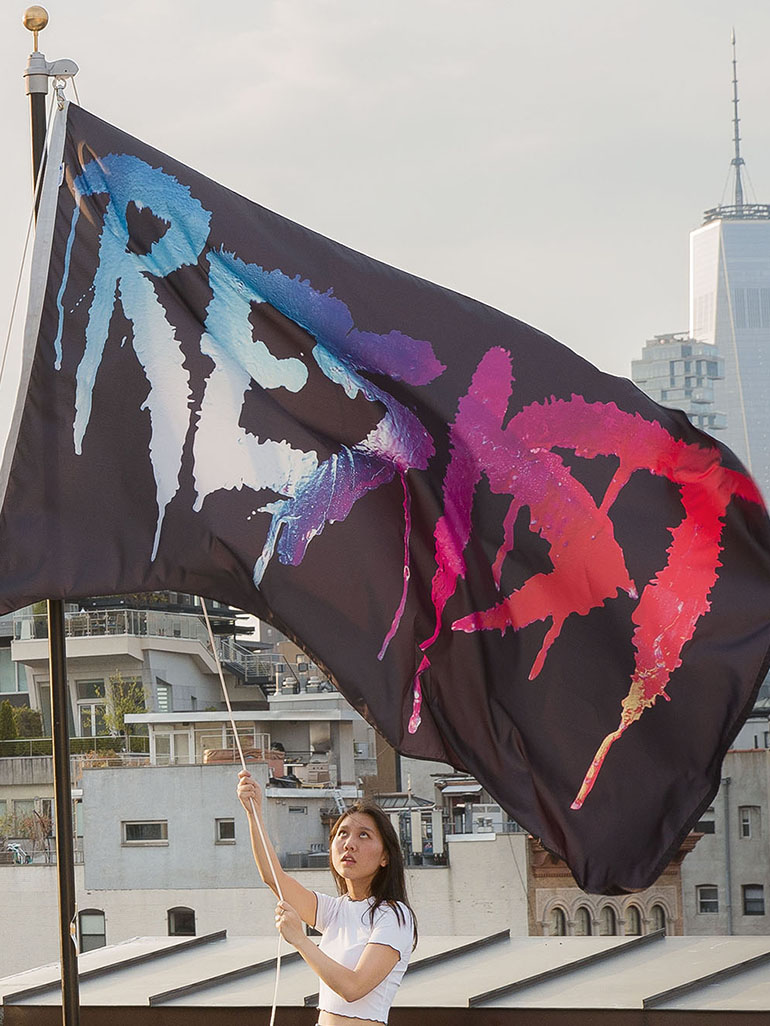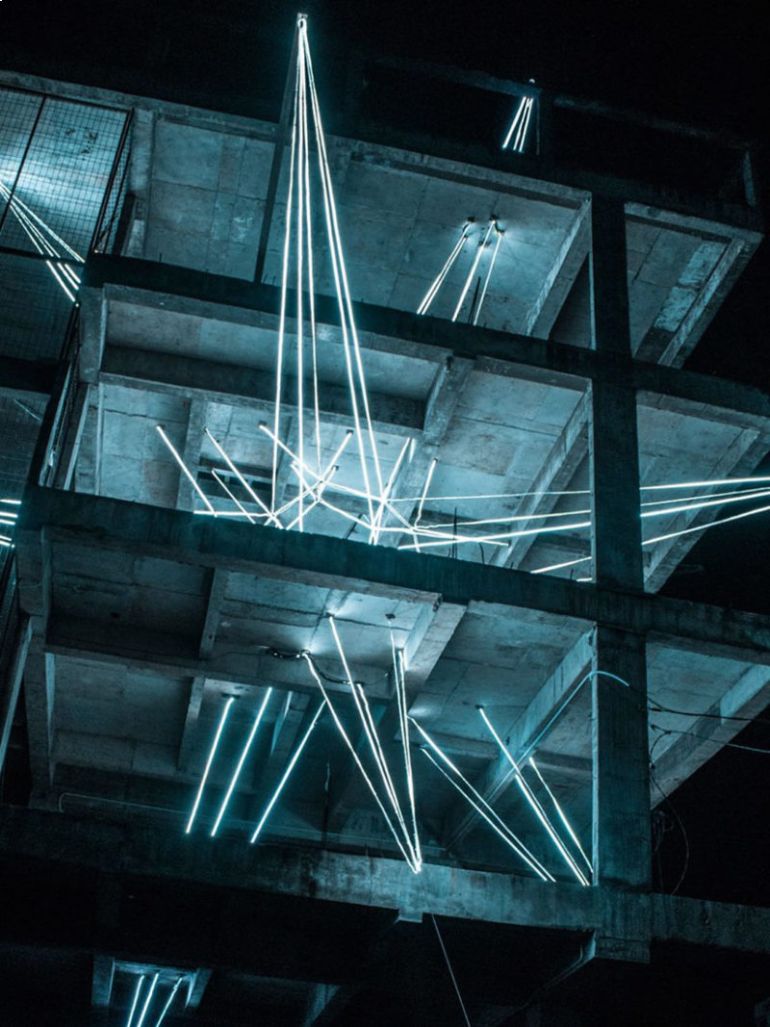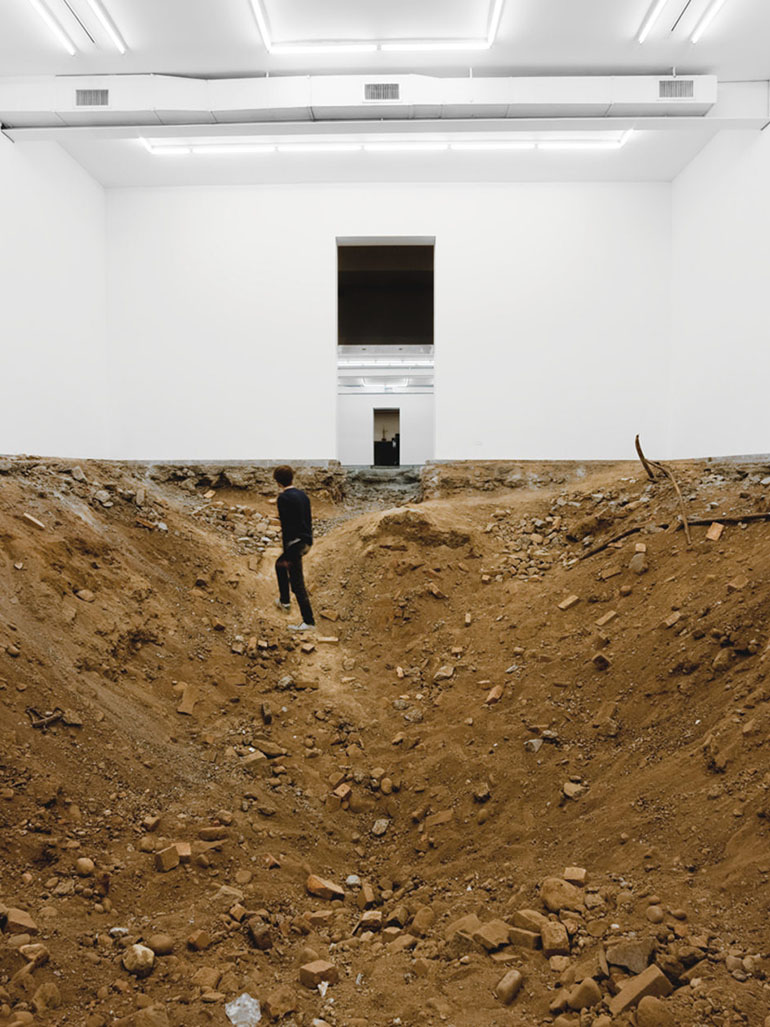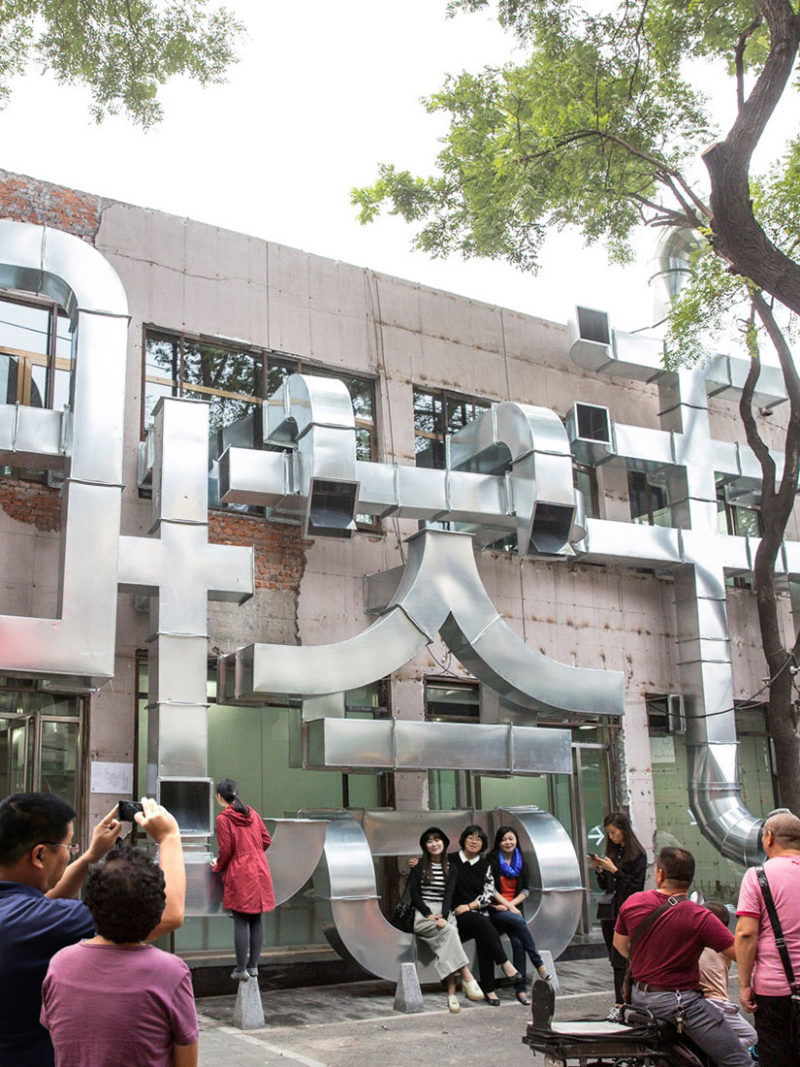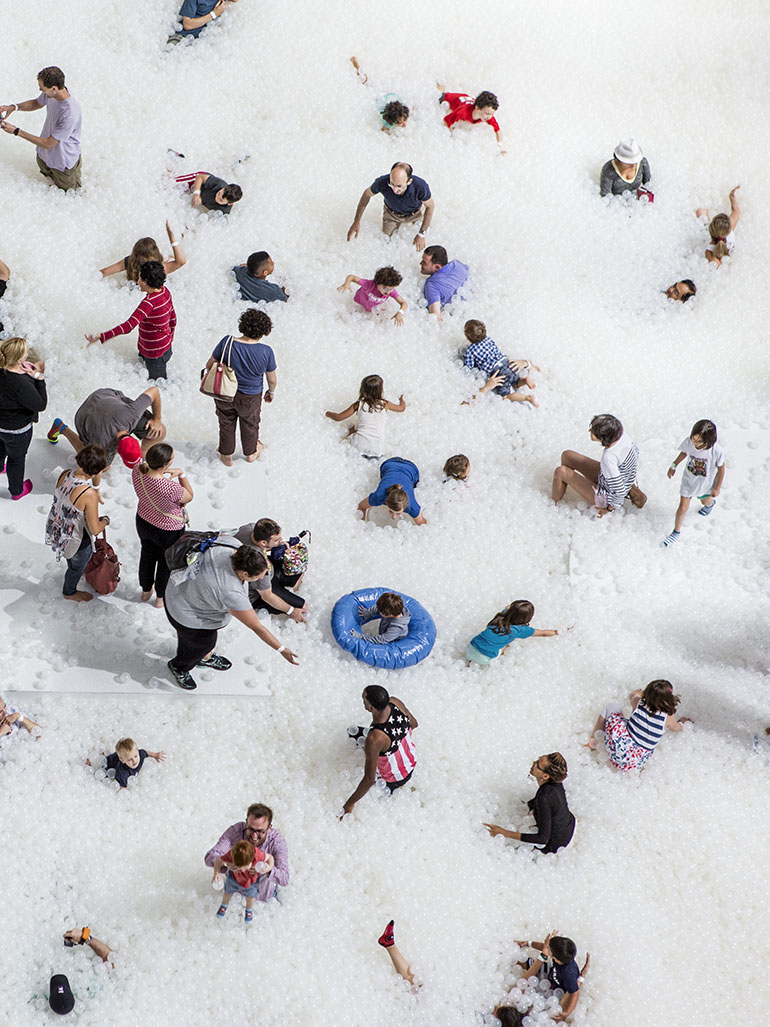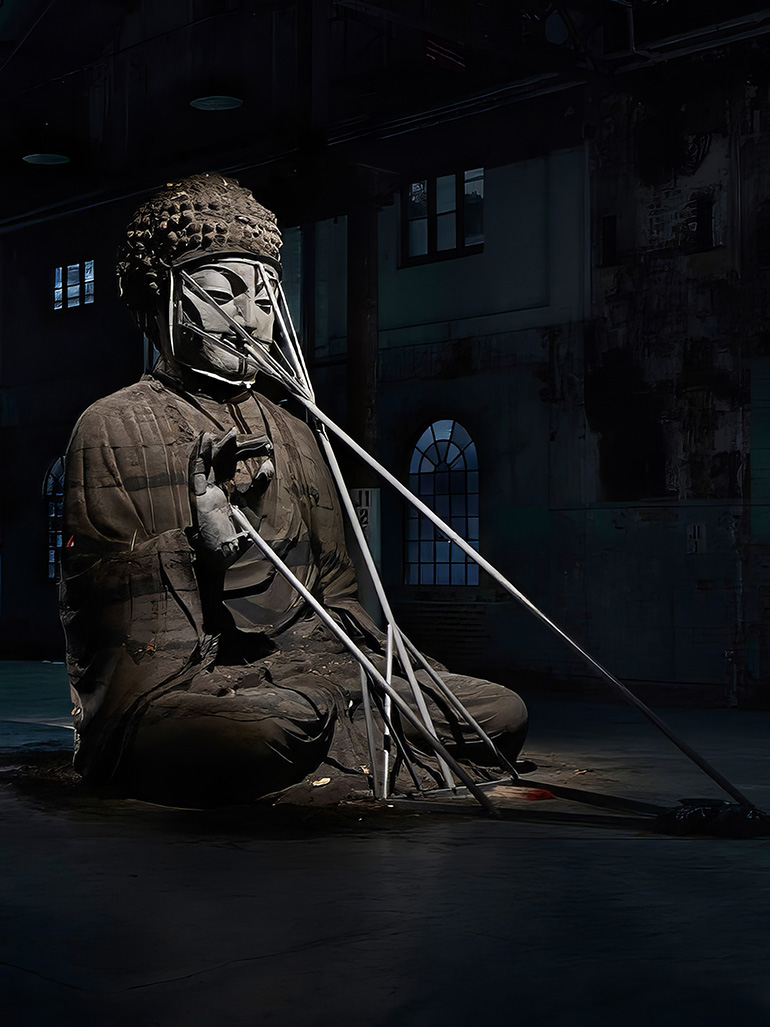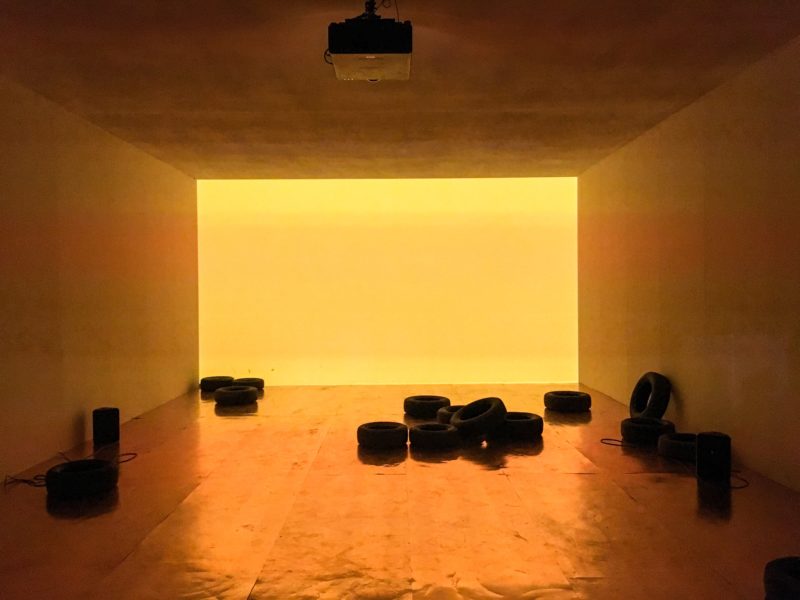
Rirkrit Tiravanija – Untitled, 2015 (bangkok boogie woogie, no. 1), 2015
“In 2010, Bangkok erupted in violence with protesters from both the Left and Right, battling the military in the streets. The main weapon on both sides was the tire, both as a barricade and as improvised Molotov cocktail, rolled instead of thrown. In 2015, Rirkrit Tiravanija created an installation, untitled 2015 (bangkok boogie woogie, no. 1), sourced from this particularly vernacular form of action, straight from the streets of his hometown. In what became the very last action at the old Gavin Brown’s enterprise space on Greenwich St. in New York before it was demolished, Tiravanija cast rubber tires into bronze doppelgängers, and rolled them flaming through the gallery filled with petroleum fuel; all of this was filmed, edited, and used as the backdrop for the installation. The mirrored copper floor reflects the rolling burning movement, while the metal tires produce a clanging soundtrack, conjuring a feeling of violent assault within the gallery space. Part political reflection, and part kinetic experiment, untitled 2015 (bangkok boogie woogie, no. 1) passes on messages from the protesters, and also from other brothers-in-arms: Fischli & Weiss, Allan Kaprow, and Jean Tinguely.”
Jetzer, Gianni (2018) retrieved from artbasel.com/artworks
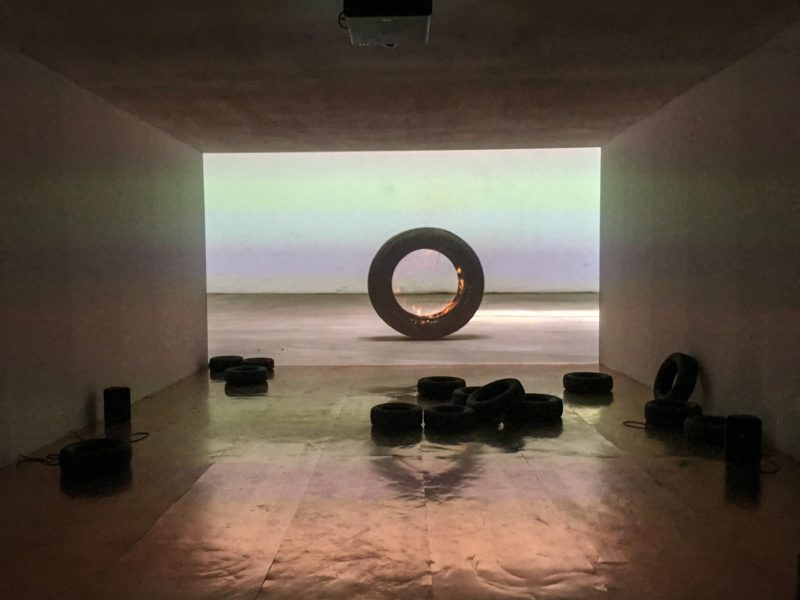
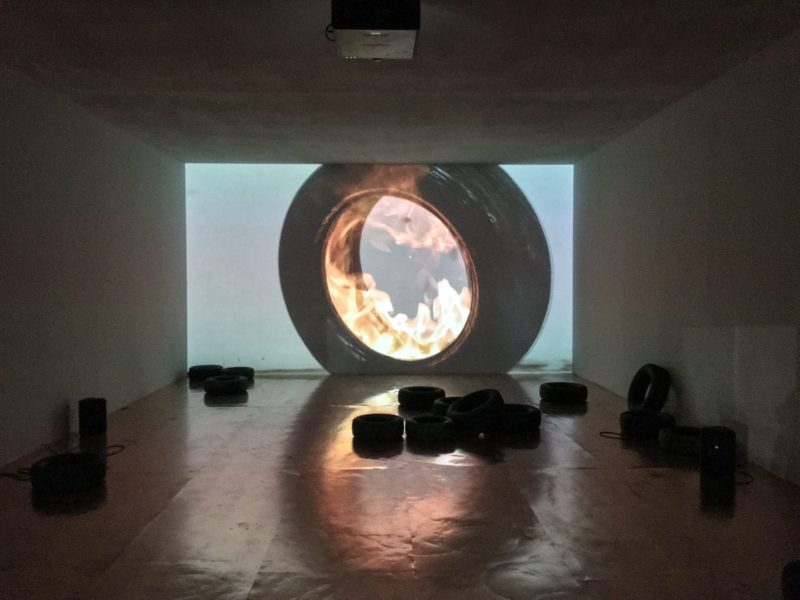
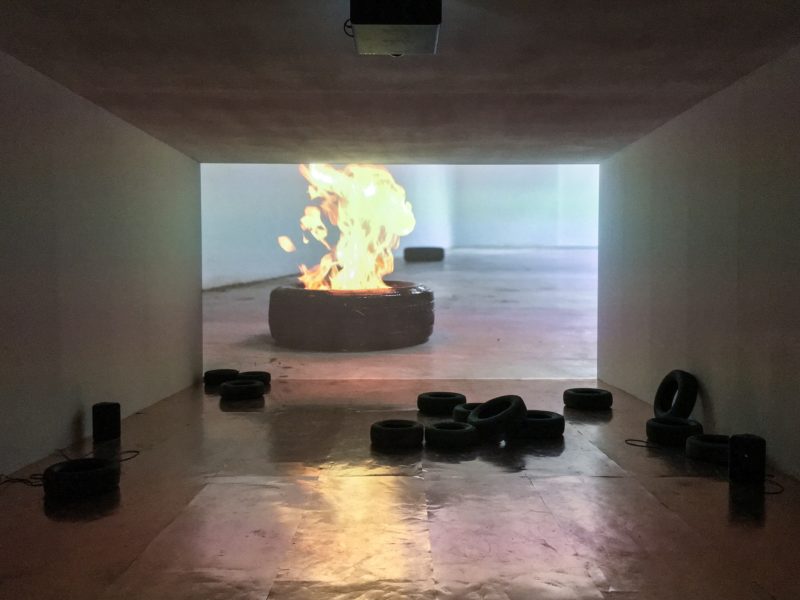
Ai Weiwei – Tiger, Tiger, Tiger, 2015
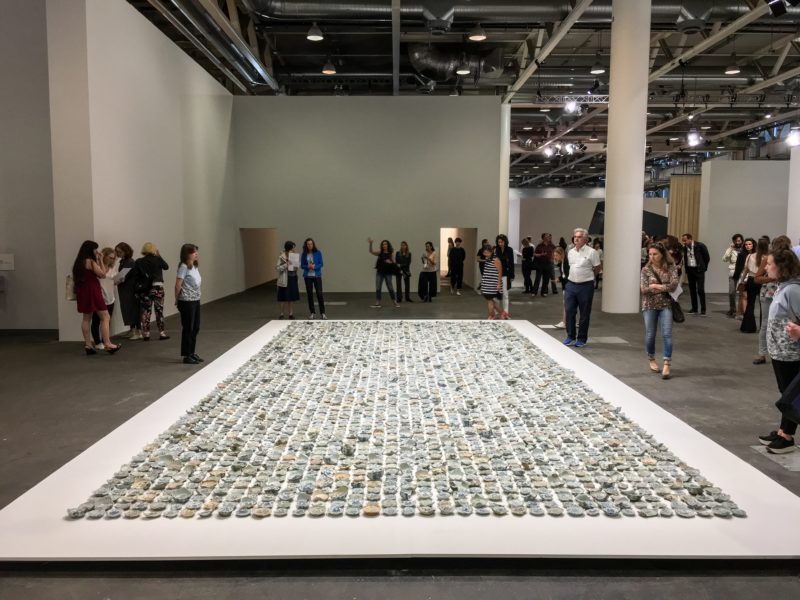
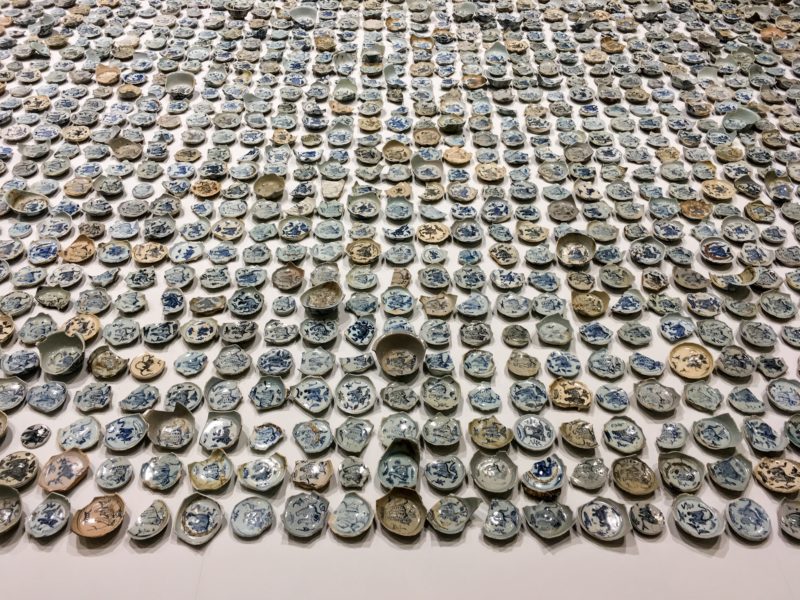
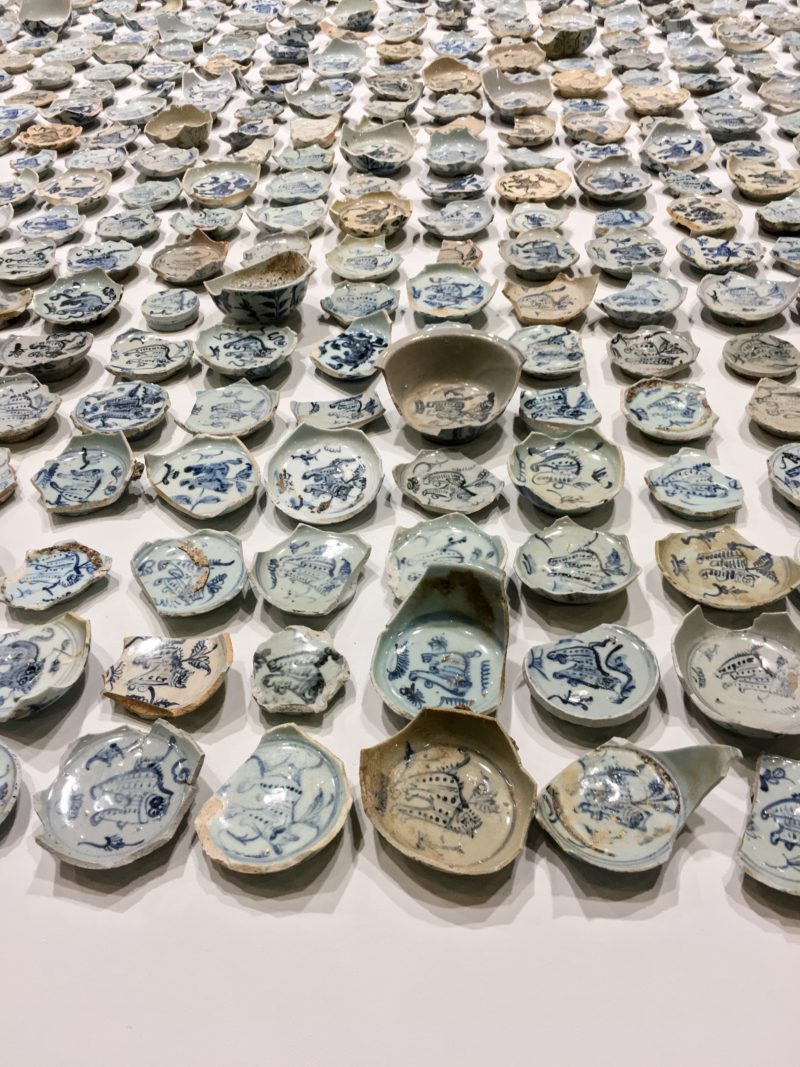
“Ai Weiwei has long taken interest in salvaged and readymade objects from China and is deeply indebted to the rich cultural heritage of the country of his birth. Symbolizing iconoclasm yet also acting as an accolade, the 3,020 broken porcelain vessels that comprise Tiger, Tiger, Tiger (2015) speak of a multitude of creators who once touched them. Gathered by Ai Weiwei over the course of two decades, each fragment depicts a hand-painted tiger that adorned the inside base of a precious bowl. The porcelain originates from the Ming Dynasty (1368–1644) and each tiger reveals the hand of a now-forgotten artist. Placed next to one another on a simple white platform, the shards become a visually unified sea of history. The tiger is also a zodiac sign and symbol of courage in China, and in Ai Weiwei’s work it becomes a metaphor for both the endurance of cultural memory, and, in this fractured state, its fragility. Via strategies to which Ai Weiwei has returned throughout his career, Tiger, Tiger, Tiger encapsulates the dichotomies of the human condition, which remain at the heart of his engaged practice.”
Jetzer, Gianni (2018) retrieved from artbasel.com/artworks
He Xiangyu – Untitled, 2018
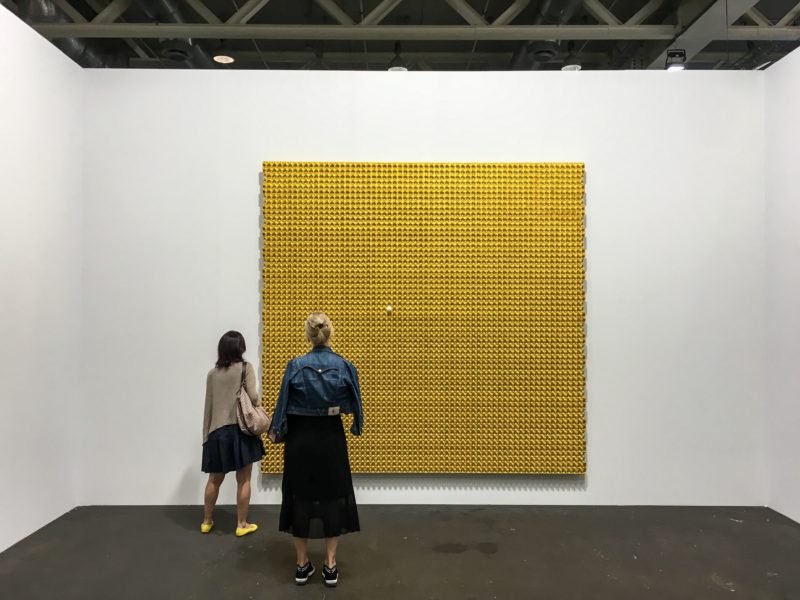
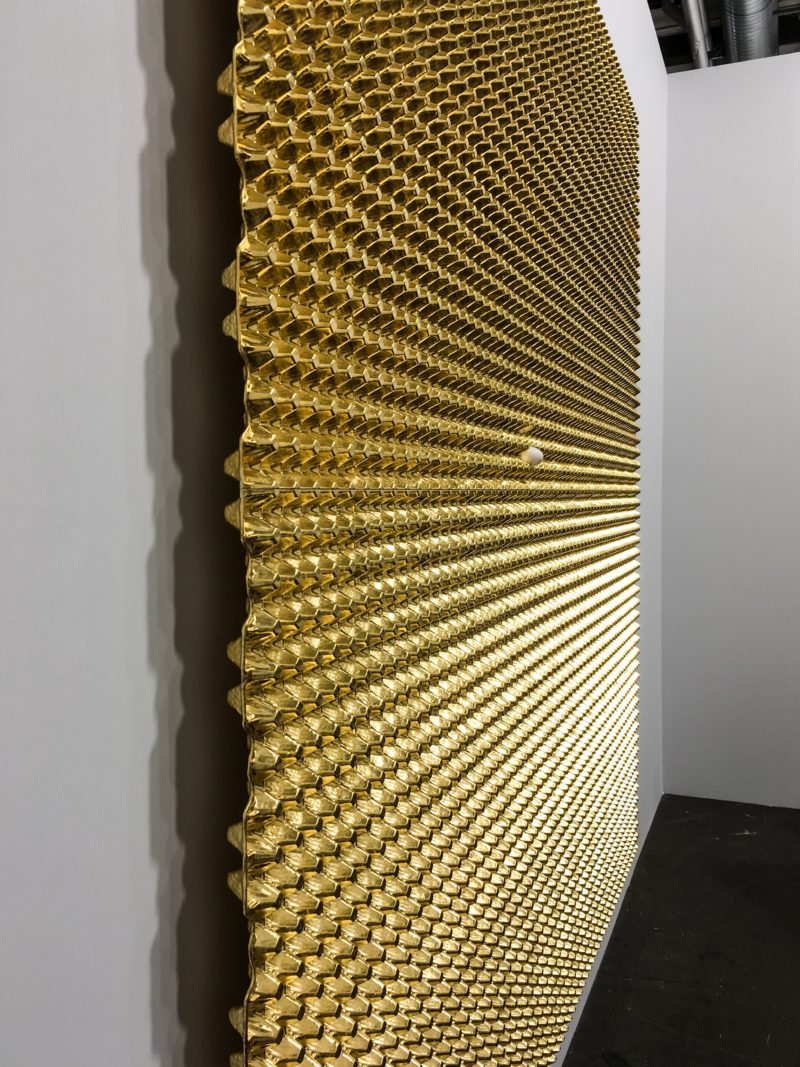
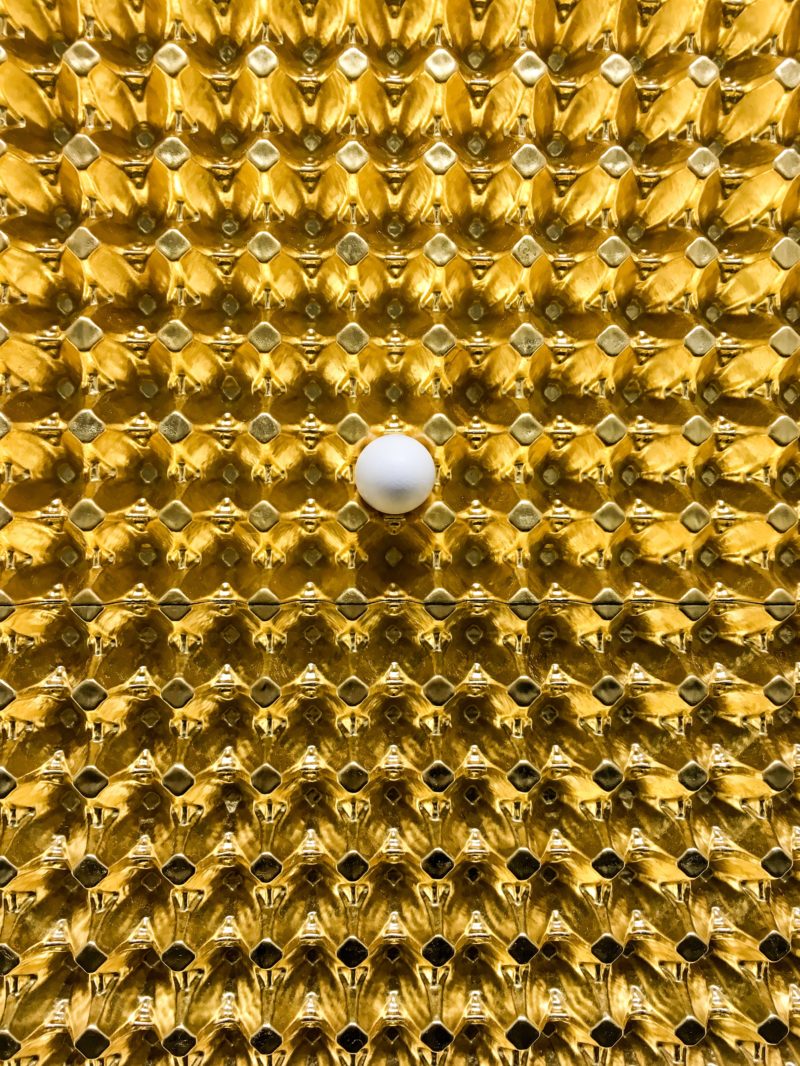
“The one-child policy, which was first implemented in the late 1970s and ended in 2015, has been one of the most controversial policies in modern Chinese history. With its profound impact on China’s education system, resource allocation and social structure, for those who were born in the 1980s, the far-reaching policy was closely associated with their self and social identities. The ‘only child’ thus became a term to both define and differentiate the social generation. The small photo is of the artist himself as a child, installed at his corresponding height. The 3,500 grams of pure gold on the wall adjacent serves as a metaphor and provocation. The irresistible temptations of the glittering, precious metal versus its cheap, everyday mold (the egg carton) acts as the perfect portrait of a conflicted generation defined by power vs powerlessness, materiality vs conceit. The lone egg sits on a golden throne: In this new context the relationship between the egg-tray and the egg is reversed.”
Jetzer, Gianni (2018) retrieved from artbasel.com/artworks
Robert Longo – Death Star II, 2017 – 2018
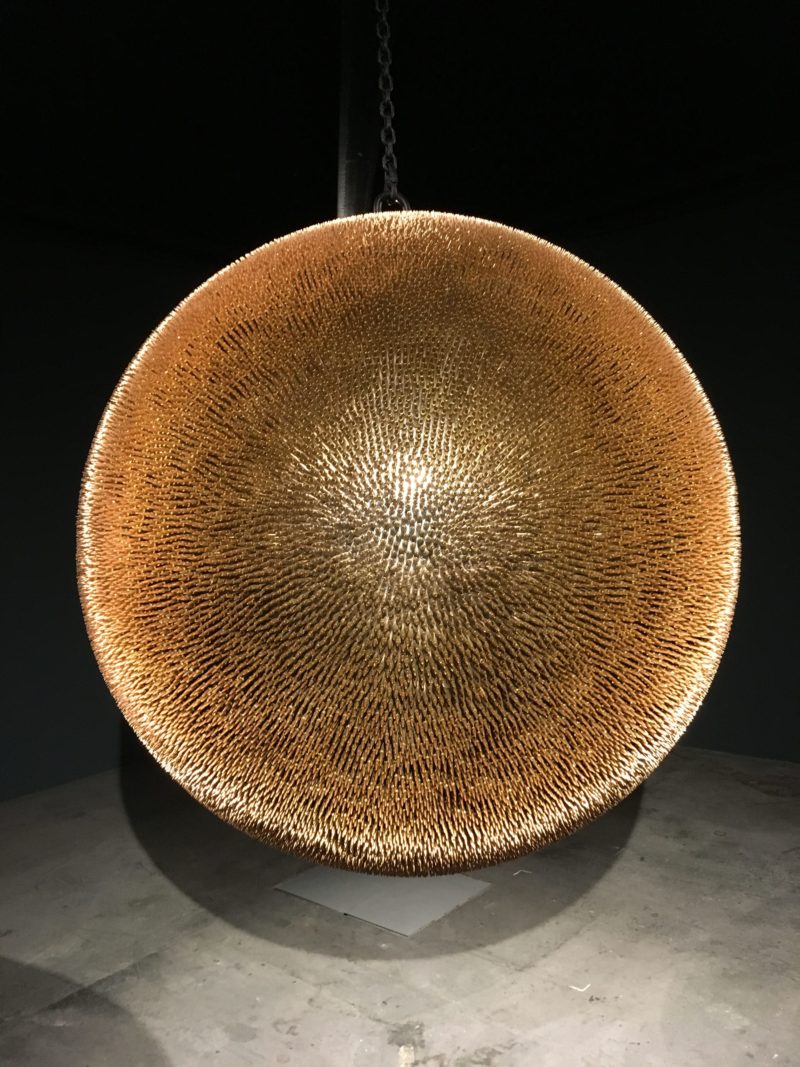
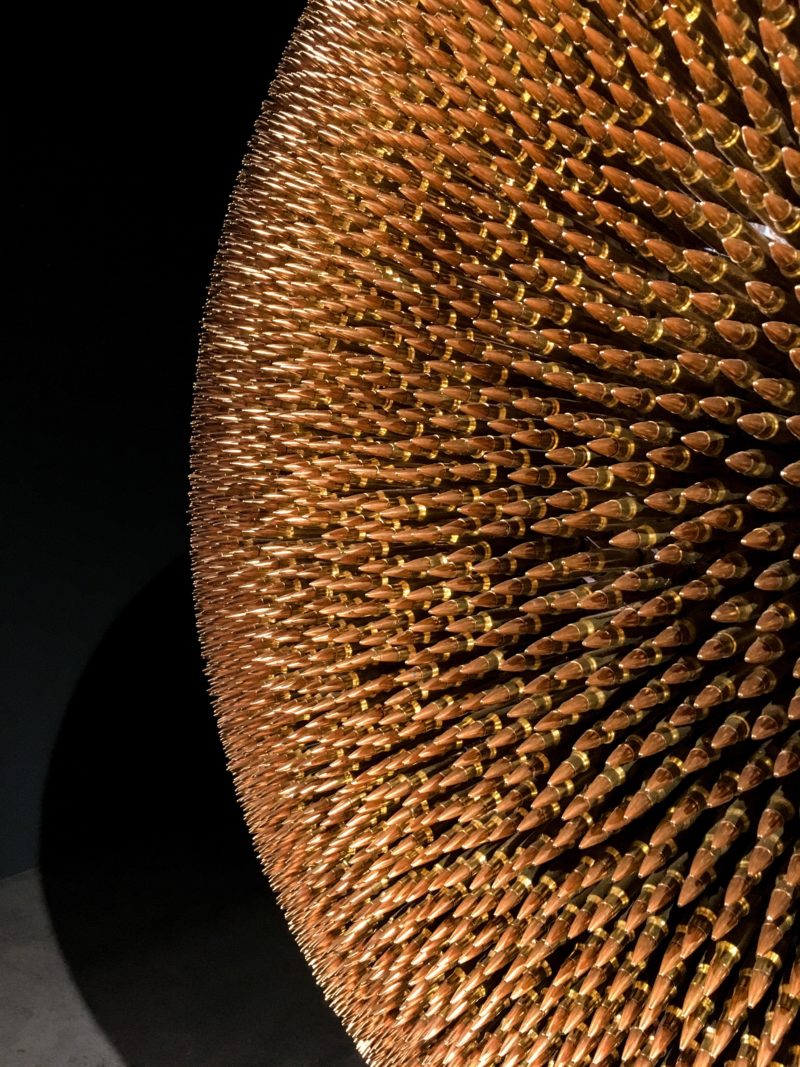
“Created in response to the exponential proliferation of mass shootings in the United States, Robert Longo’s Death Star II consists of a suspended globe studded with 40,000 copper and bronze full metal jacket bullets. The work is a sequel to Longo’s original 1993 sculpture Death Star, though more than twice as large and housing more than double the number of bullets, reflecting the frightening increase in mass shooting incidents in the United States in the last 25 years. Densely packed over the entire sphere, the gleaming bullets viscerally visualize the physical, material elements enacting this disturbing violence – tragically becoming increasingly ubiquitous. This aggressive, provocative surface in combination with the sculpture’s huge mass and planet-like presence create an unavoidable confrontation with viewers. Longo gives statistical abstractions a brutal, material form, mirroring the fear and terror that continue to envelop our society and forcing viewers to consider the underlying causes of this startling turn of events. In order to support efforts to reduce gun violence, 20% of the proceeds from the sale of Death Star II will be donated to Everytown for Gun Safety (https://everytown.org/).”
Jetzer, Gianni (2018) retrieved from artbasel.com/artworks
Francis Alÿs – Tornado, 2000 – 2010





“Throughout his practice, Belgian-born Francis Alÿs directs his poetic and imaginative sensibility toward anthropological and geopolitical concerns. His multifaceted works are centered around observations of, and engagements with, everyday life, which the artist himself has described as ‘a sort of discursive argument composed of episodes, metaphors, or parables.’ Inspired by the dusty, burnt fields in southern Mexico, Alÿs filmed for 10 years the reoccurring tornados that ravage the land at the end of the dry season. With a handheld camera, he attempts to enter the vortex and capture the stark tension between violent, chaotic movement and unsettling quietness. Tornado allegedly has its roots in an amusing misunderstanding where Alÿs overheard his friends talking about Cervantes’s hero Don Quixote fighting ‘windmills’ (in Spanish, molinos de viento). Alÿs thought they were talking about ‘tornados’ (remolinos de viento), and his quest to enter the eye of the storm can be compared to Quixote’s often foolish pursuit of ideals in Cervantes’s novel.”
Jetzer, Gianni (2018) retrieved from artbasel.com/artworks
Richard Mosse – Incoming, 2016
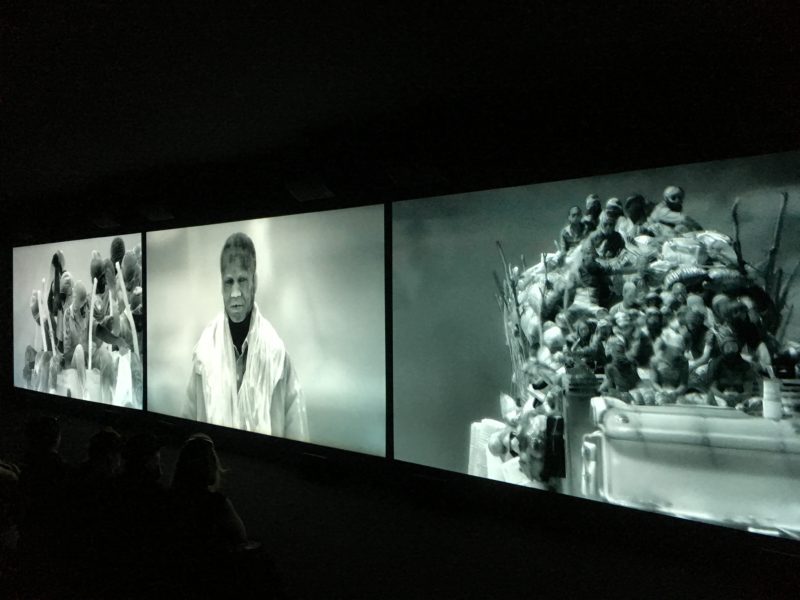
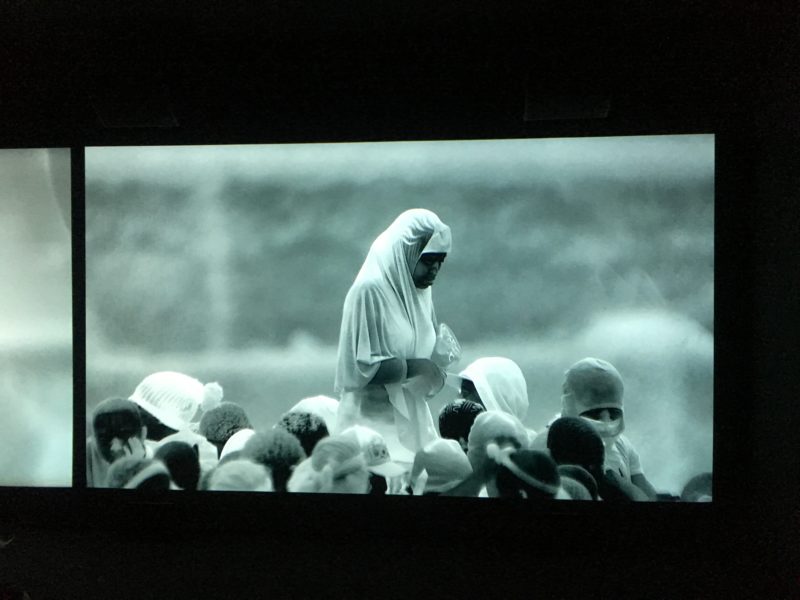
“Richard Mosse has developed a body of work that is both unabashedly aesthetic while simultaneously fraught with political and ethical implications. Throughout his work, Mosse subverts weaponized photographic technologies, using them to confront the viewer and question documentary forms. The immersive three-channel video installation, Incoming, documents the journeys of refugees using a military thermal camera that can detect human body heat from a distance of more than 30 km, day or night. He has used this technology to create an artwork about the mass migration crisis unfolding across the Middle East, North Africa, and Europe. Incoming is a critically acclaimed film installation, made in collaboration with Ben Frost and Trevor Tweeten and co-commissioned by the National Gallery of Victoria, Melbourne, and the Barbican Art Gallery, London. Mosse lives and works in New York and Ireland. He is the recipient of the Prix Pictet, the Deutsche Börse Photography Prize, the Yale Poynter Fellowship in Journalism, the B3 Award at the Frankfurt Biennial, the Guggenheim Fellowship, a grant from the Shifting Foundation, the Pulitzer Center on Crisis Reporting, and the Leonore Annenberg Fellowship.”
Jetzer, Gianni (2018) retrieved from artbasel.com/artworks
Ibrahim Mahama – Non-Orientable Nkansa II, 2017
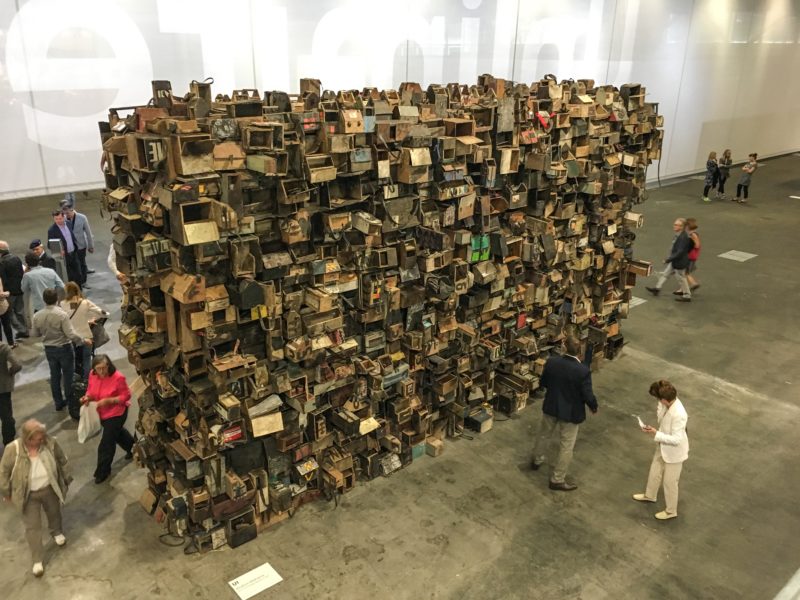
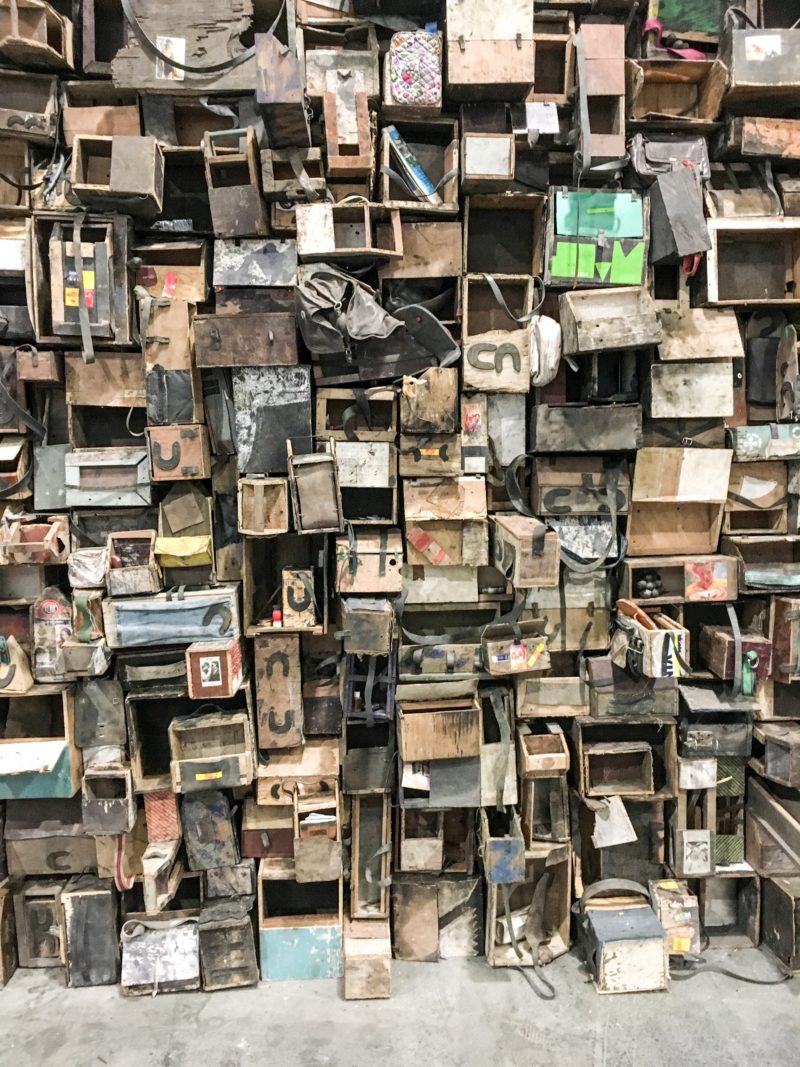
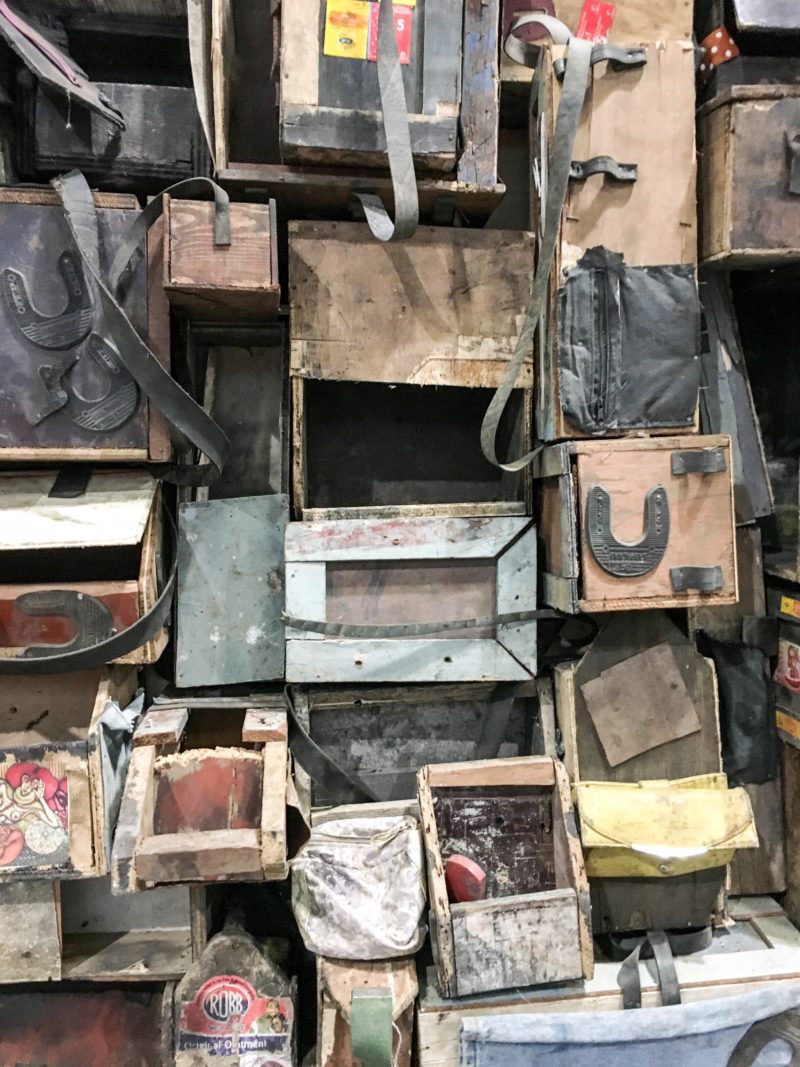
“For Non-Orientable Nkansa II (2017) Ibrahim Mahama produced hundreds of ‘shoemaker boxes’ with several collaborators, one of whom was named Nkansa. These small wooden objects are made from scrap materials found in Accra and Kumasi, Ghana, and used to contain tools for polishing and repairing shoes. Bearing the marks of the trade of ‘shoeshine boys,’ the boxes also function as an improvised drum, when pounded to solicit business. Mahama and his collaborators – migrant workers from rural Ghana – obtained these items through a process of negotiation and exchange. Such transactions form a critical feature of the artist’s practice, as does the particular site of the work’s production, in this case, a former state-run paint factory. The production location lends added resonance, since it is in the political exigencies of space and the evolution of materials from one context to another that the work’s intention resides. Gathered together in a single, monumental unit, the containers are crammed with other re-purposed items such as heels, hammers and needles, all of which are part of Mahama’s ongoing inquiry into the life of materials and their dynamic potential.”
Jetzer, Gianni (2018) retrieved from artbasel.com/artworks
Lee Ufan – Relatum (Iron Field), 1969 – 2018
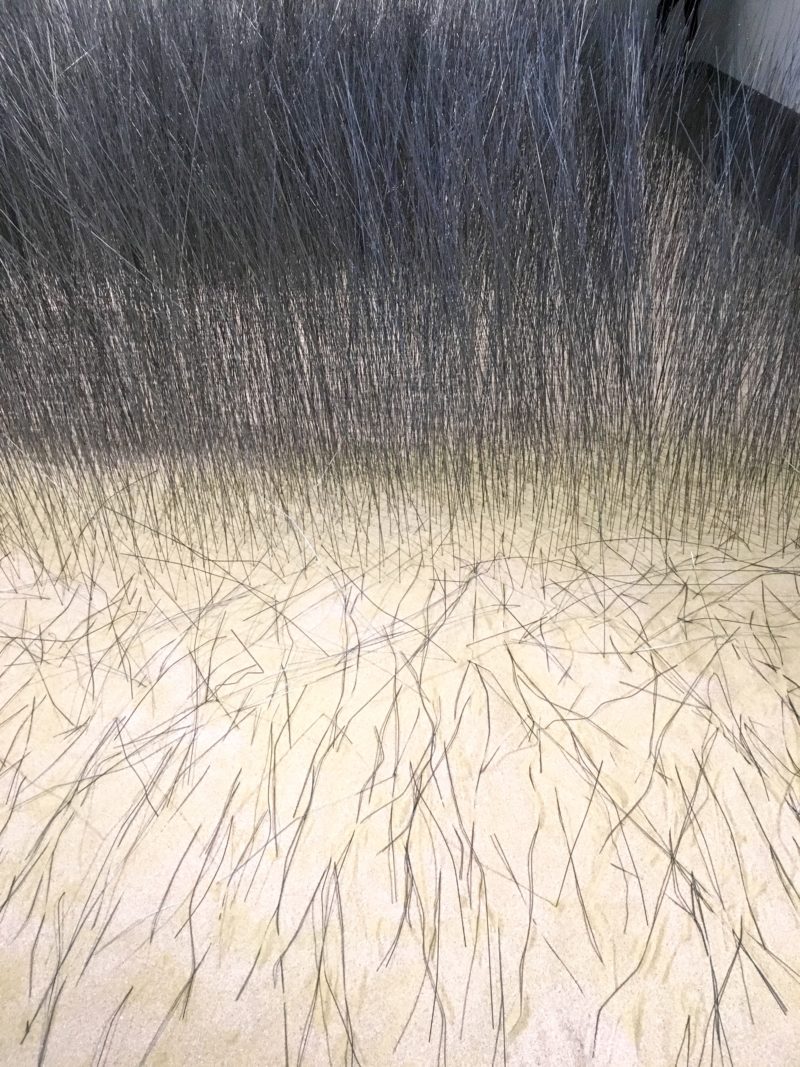
“Using sand as its base, Relatum (Iron Field) is exemplary of Lee Ufan’s practice of working with raw, natural, and industrial elements. The field of narrow steel wires, subtly manipulated by the artist and stretching vertically from the ground, emphasizes the relationship between space, perception, and object. Previously conceived and installed in 1969/70 and in 1994, the work develops from Lee’s conceptual approach to materiality and his expression of the relationships between industry and nature, object and human. Each sculpture in Lee’s ‘Relatum’ series is centered on the idea of a dialogue between object and space. The viewer plays an active, equal role as a defining aspect of the work, prompting the contemplation of abstract forms and their relation to one another. Relatum (Iron Field) deepens the awareness of Lee’s site-conditioned practice; as one of the pioneers of the Mono-ha movement in Japan, Lee worked concurrently with the development of the Minimal and Conceptual art movements in the United States and Great Britain.”
Jetzer, Gianni (2018) retrieved from artbasel.com/artworks
Rashid Johnson – Antoine’s Organ, 2016
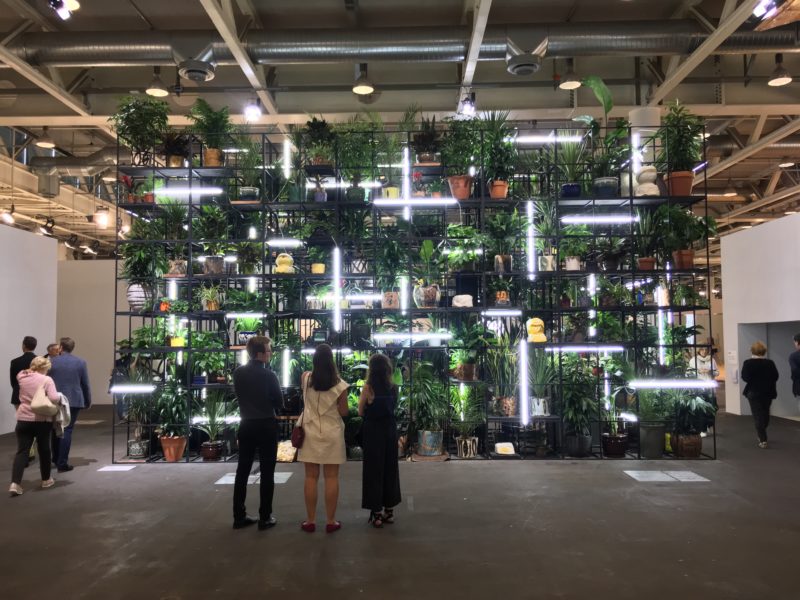
“Antoine’s Organ injects a sprawling, heterogeneous ecosystem into a rigid armature of black steel scaffolding. Visually evoking prison cells and Sol LeWitt’s open Minimalist cubes alike, Antoine’s Organ plays on the structure of the grid and the form’s associations with containment, rigor, and organization. Building upon these constraints as it subverts them, Rashid Johnson’s latticed construction teems with a lively bricolage of potted plants, shea-butter busts, video monitors playing looped films, ornate rugs, music, carefully selected stacks of books and a fully functioning piano. Johnson’s soaring sculptural installation functions through organic accumulation, growth and the delight of unexpected elements meeting. At the beating heart of the labyrinthine work is an upright piano, partially concealed above the viewer and behind the leaves. The installation features performances by the classically trained pianist and music producer Antoine Baldwin (also known as Audio BLK). As Baldwin plays the piano suspended in the air, melodies float through the foliage. The music continuously activates the work, implying the life-giving power of music in conveying narrative and cohering communities.”
Jetzer, Gianni (2018) retrieved from artbasel.com/artworks
Lara Favaretto – Birdman or (The Unexpected Virtue of Ignorance), 2018
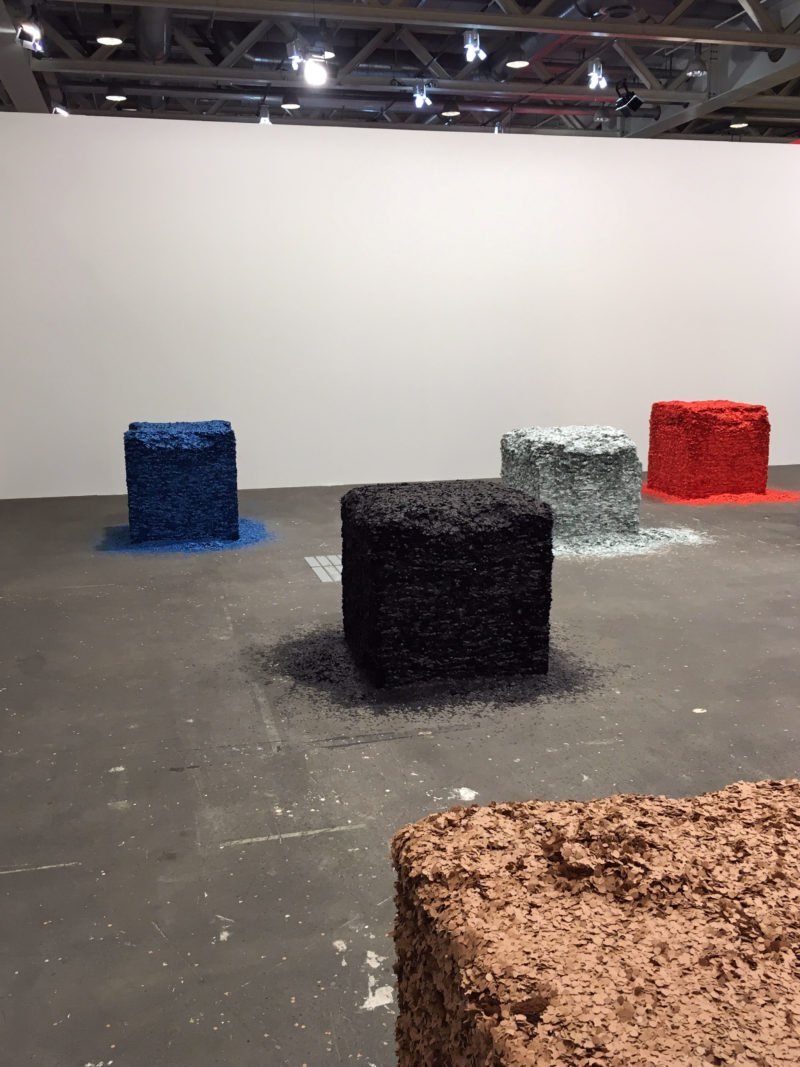
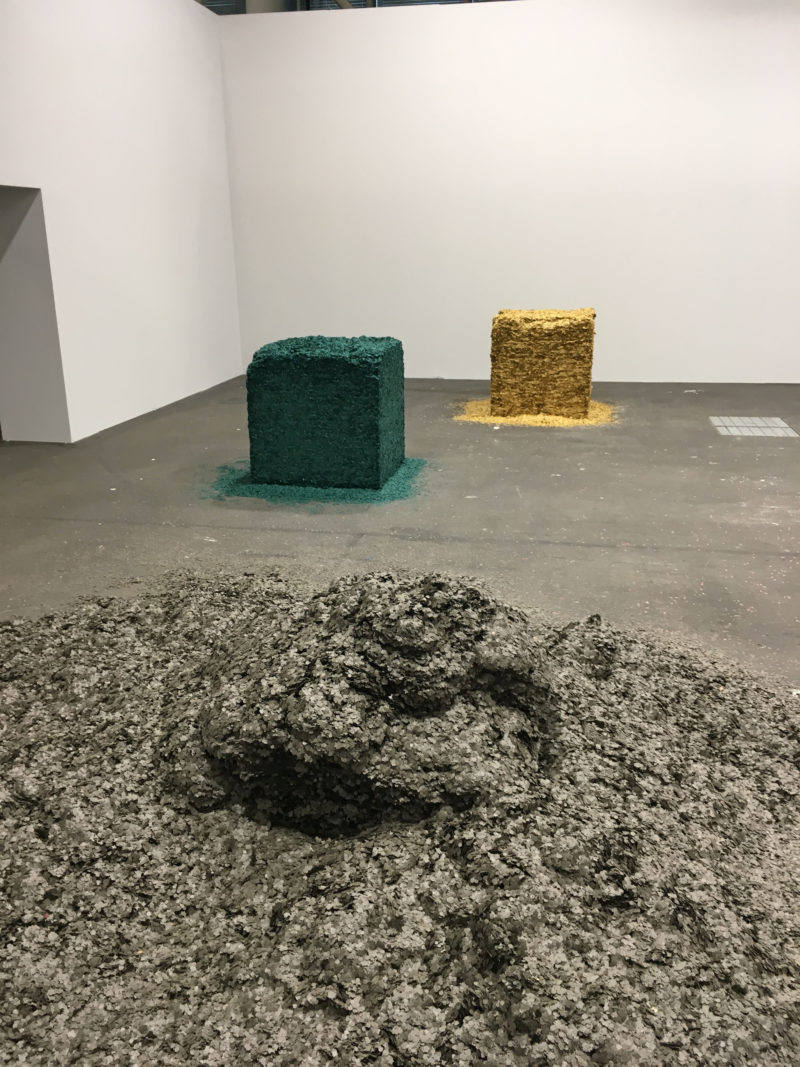
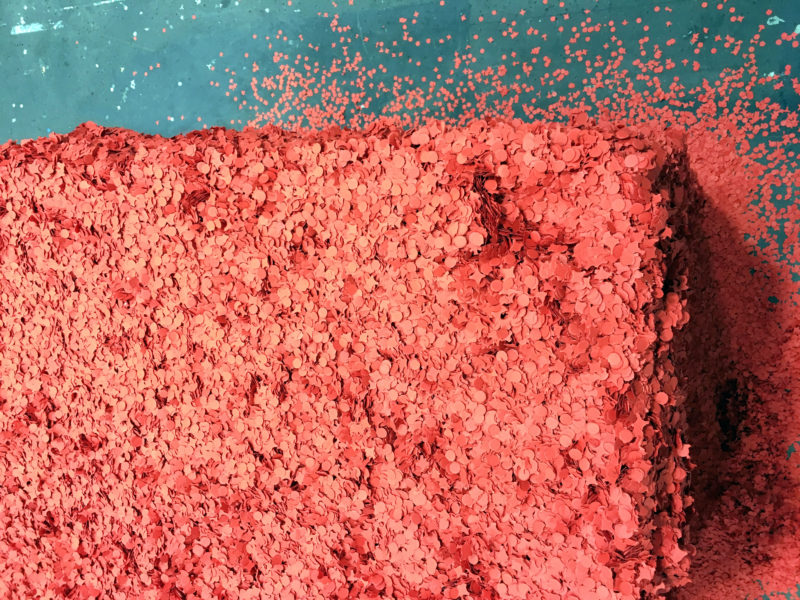
“Lara Favaretto’s cubes of confetti have an unstable appearance, embodying an ephemeral sense of transience, marked by the flow of time. And yet, in them, we find both antagonism and contradiction. The mass of paper confetti is compressed inside a wooden casing only by the weight and action of the human body. Its solidity is constantly undermined by an inevitable and yet unpredictable disintegration. The initial purity and compactness of the shape and color of these cubes is made vulnerable by the extreme lightness and volatile nature of the material they are made of. All it takes is a puff of air to disperse the tiny colored fragments, and the cubes gradually surrender to probable collapse – and early ruin. They recover their initial shape only when they are compressed again, starting out from scratch. The polyphonic nature of the work emphasizes the characteristics of the individual cubes, and the choice of colors is inspired by a frame from the comic film Birdman (2014), about an aging superhero actor who wants to be taken seriously. The aim is to convey the cathartic and transformative power that can be suggested by a range of separate, deconstructed tones, without the need for any additional form of narrative.”
Jetzer, Gianni (2018) retrieved from artbasel.com/artworks
